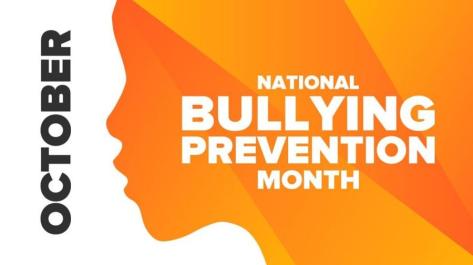Bullying Prevention

Pacer, which is a center that offers information and training to families of children and youth with disabilities, founded National Bullying Prevention Month in 2006. It is “a month long event to prevent
childhood bullying and promote kindness, acceptance, and inclusion.” (www.pacer.org) Pacer also works with the National PTA, American Federation of Teachers, and the National Education
Association to supply educational resources and support in response to bullying behavior. It is hoped that bullying can be prevented through education and awareness.
“Historically, bullying had been viewed as a childhood rite of passage that ‘makes kids tougher,’ but the reality has always been that bullying can leave devastating and often long-term effects such as a loss of self-esteem, increased anxiety, and depression for those involved.” That viewpoint has changed considerably over the years.
“Bullying is unwanted, aggressive behavior among school-aged children that involves a real or perceived power imbalance. The behavior is repeated, or has the potential to be repeated over time.” (https://youth.gov) Bullying includes making threats, spreading rumors, attacking someone physically or verbally, or excluding someone from a group on purpose. Cyberbullying includes sending mean text messages or emails, posting rumors or embarrassing pictures or videos on social media, or making fake profiles.
National Bullying Prevention Month encourages school culture and individual classrooms to support respectful school environments by fostering inclusion and respect. “The large body of research on effective responses to name-calling and bullying concurs that schools and other educational institutions can best address these behaviors through ongoing, comprehensive plans. These can include both intervention and prevention strategies and engage all people in the school environment.” (www.adl.org) Students can practice empathy, reach out to new classmates, and report bullying so others don’t suffer in silence. Teachers can give positive reinforcement by rewarding students who show respect and thoughtfulness. And administrators can plan bullying prevention programs. (https://nationaltoday.com) Parents and the community should also be involved.
“By being aware of not only the types of bullying but also the types of bullies your child may encounter, you will be better equipped to help your child in any situation.” (www.verywellfamily.com) Bullying is not just physical, name calling, excluding individuals, gossiping, or making fun of a person’s race or religion. There are actually six types of bullying. The most obvious one and historically most noticed in schools is physical bullying. Others include prejudicial, sexual, verbal, and cyber bullying, and relational aggression. (These are all well-defined at www.verywellfamily.com) Priorities of parents should be to help a child overcome bullying and to find ways to prevent future bullying incidents. It is important that students know that they have options to deal with bullies. “Feeling like there are no options or that the bully must be tolerated, lead to feelings of hopelessness and depression.” (www.verywellfamily.com) The above mentioned website is very thorough and covers many other important topics related to bullying. Two of them are “Ten Steps to Help a Child Overcome Bullying” and “Seven Ways to Avoid Bullies at School.”
“Childhood bullying and school violence can have lifelong consequences for elementary students. If your child is being bullied, take the situation seriously. Help your child create a plan to stop bullying in its tracks.” (www.mayoclinic.org) The first line of defense against bullying is to be prepared. Hopefully books, articles, websites, physicians, teachers, guidance counselors, and friends can help you be prepared.
